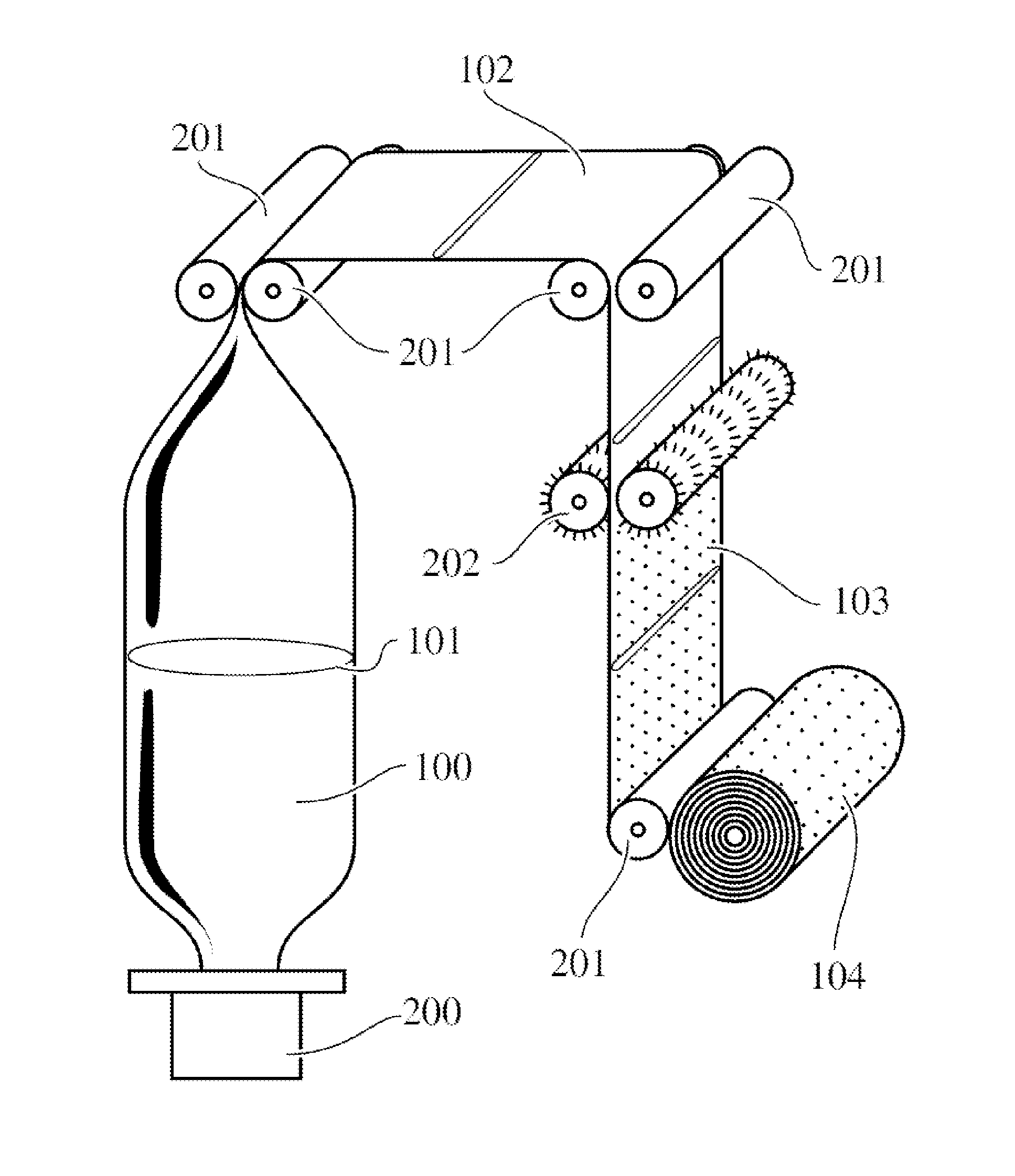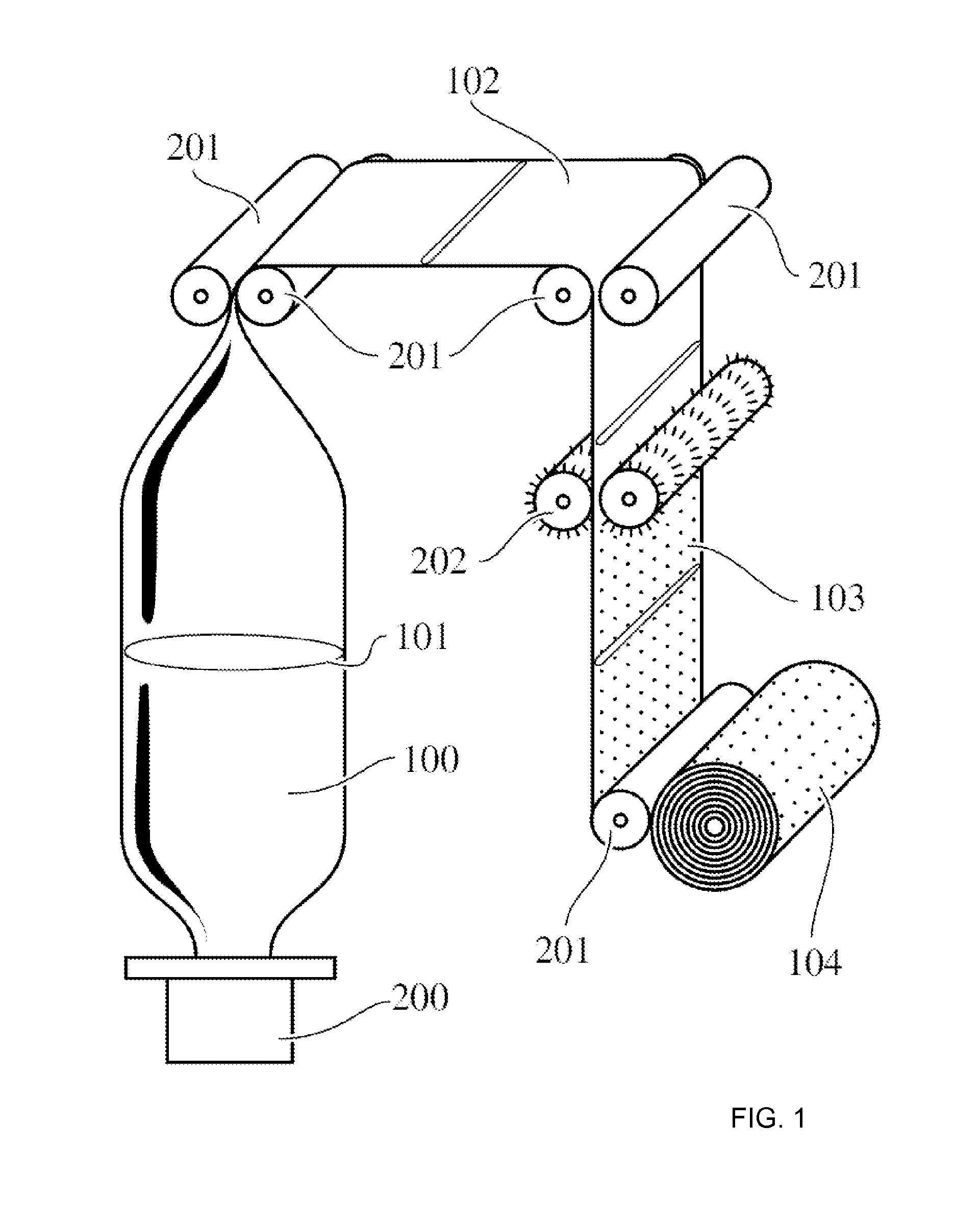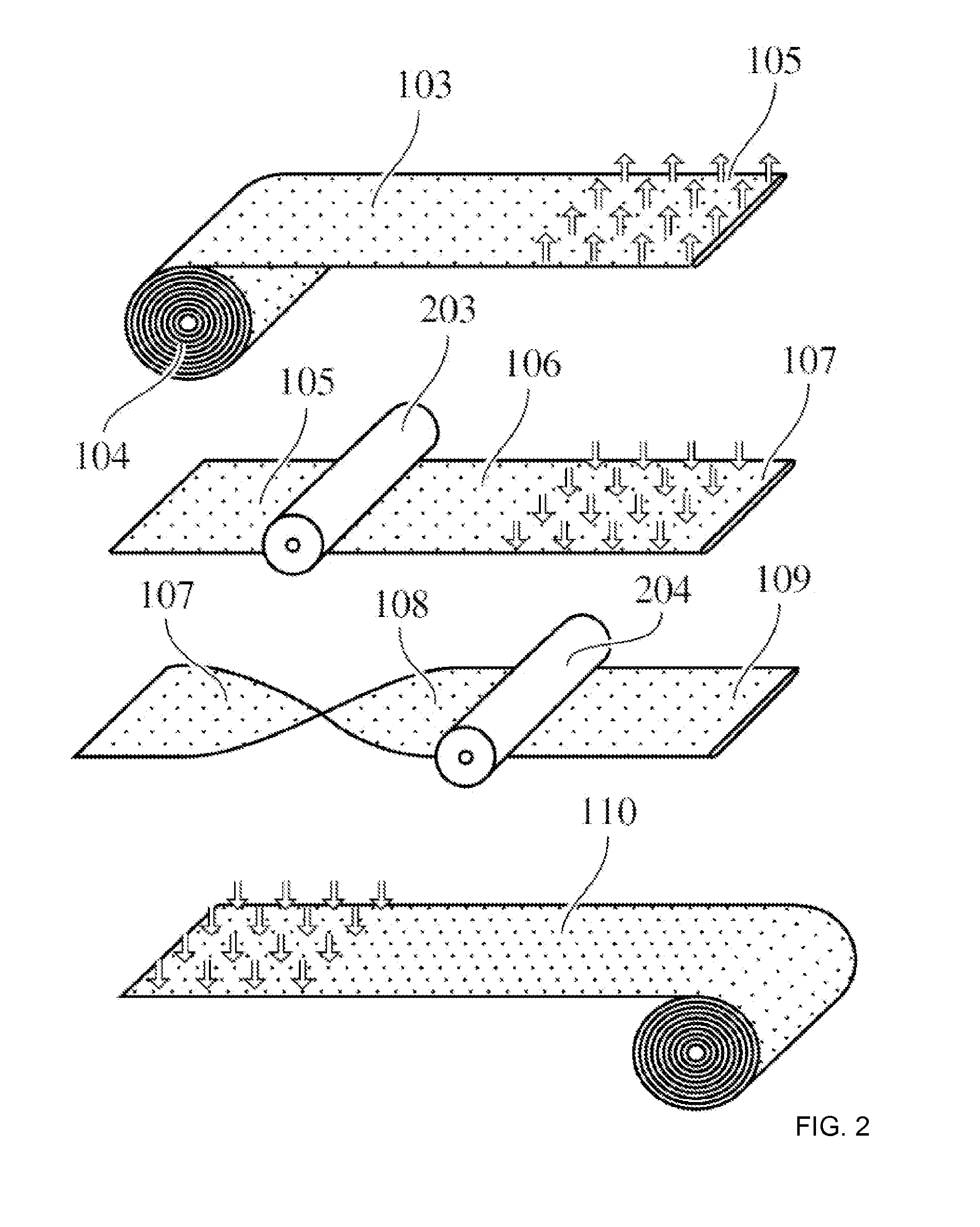Process for producing a polymeric film with a cured polysiloxane coating
a polymer film and polysiloxane technology, applied in the direction of film/foil adhesives, synthetic resin layered products, transportation and packaging, etc., can solve the problems and achieve the mechanical and/or thermomechanical robustness that is necessary, and the effect of lack of mechanical and/or thermomechanical robustness
- Summary
- Abstract
- Description
- Claims
- Application Information
AI Technical Summary
Benefits of technology
Problems solved by technology
Method used
Image
Examples
example 1
[0065]A single-layer tubular plastics foil produced by blown-film extrusion, composed of LDPE with thickness of 35 μm is laid flat under evacuation and is coated with a liquid uncured polysiloxane on one of its surfaces. After thermal curing of said coating in a dryer unit, the single-side-coated, flat laid tubular foil is turned about 180°, and its second, still uncoated surface is likewise coated with a liquid uncured polysiloxane. Said second coating is also thermally cured in a dryer unit. The thickness of each of the polysiloxane coatings is 2 μm. The resultant flat laid, tubular foil coated on each surface with a cured polysiloxane is in each case completely separated in the movement direction along each lateral edge, thus providing two LDPE foils each single-side-coated with a cured polysiloxane. The total thickness of each of these foils is 37 μm.
example 2
[0066]A single-layer tubular foil produced by blown-film extrusion, made with HDPE with a total thickness of 30 μm is laid flat with evacuation and coated with a liquid uncured polysiloxane on one of its surfaces. After thermal curing of said coating in a dryer unit, the single-side-coated, flat laid tubular foil is turned about 180°, and its second, still uncoated surface is likewise coated with a liquid uncured polysiloxane. Said second coating is also thermally cured in a dryer unit. The thickness of each of the polysiloxane coatings is 1.5 μm. The resultant flat laid, tubular foil coated on each of its surfaces with a cured polysiloxane is completely separated in the movement direction along one lateral edge, thus providing, after the HDPE foil has been laid flat at the full width, a foil coated on one of its surfaces with a cured polysiloxane and having a total thickness of 31.5 μm.
example 3
[0067]A three-layer tubular foil produced by blown-film coextrusion, composed of an internal layer made of a copolyamide and having on each surface a layer (1) based on a propylene copolymer, has a total thickness of 21 μm. Said foil is laid flat under evacuation, and coated with a liquid uncured polysiloxane on one of its surfaces. After thermal curing of said coating in a dryer unit, the single-side-coated, flat laid tubular foil is turned about 180°, and its second, still uncoated surface is likewise coated with a liquid uncured polysiloxane. Said second coating is also thermally cured in a dryer unit. The thickness of each of the polysiloxane coatings is 1.5 μm. The resultant flat laid, tubular foil coated on each surface with a cured polysiloxane is completely separated in the movement direction along each lateral edge, thus giving two plastic foils each being single-side-coated with a cured polysiloxane. The total thickness of each of these foils is 22.5 μm.
[0068]FIGS. 1 to 3 ...
PUM
| Property | Measurement | Unit |
|---|---|---|
| thickness | aaaaa | aaaaa |
| thickness | aaaaa | aaaaa |
| density | aaaaa | aaaaa |
Abstract
Description
Claims
Application Information
 Login to View More
Login to View More - R&D
- Intellectual Property
- Life Sciences
- Materials
- Tech Scout
- Unparalleled Data Quality
- Higher Quality Content
- 60% Fewer Hallucinations
Browse by: Latest US Patents, China's latest patents, Technical Efficacy Thesaurus, Application Domain, Technology Topic, Popular Technical Reports.
© 2025 PatSnap. All rights reserved.Legal|Privacy policy|Modern Slavery Act Transparency Statement|Sitemap|About US| Contact US: help@patsnap.com



